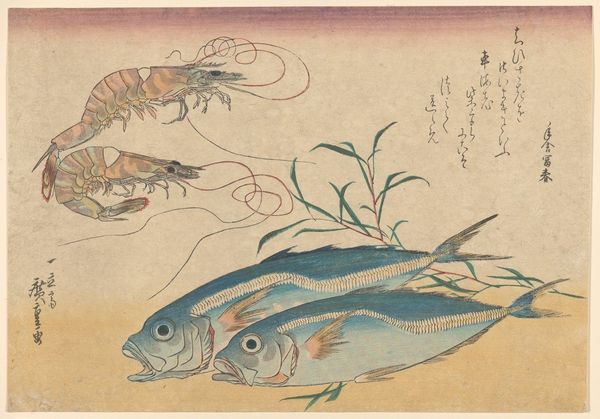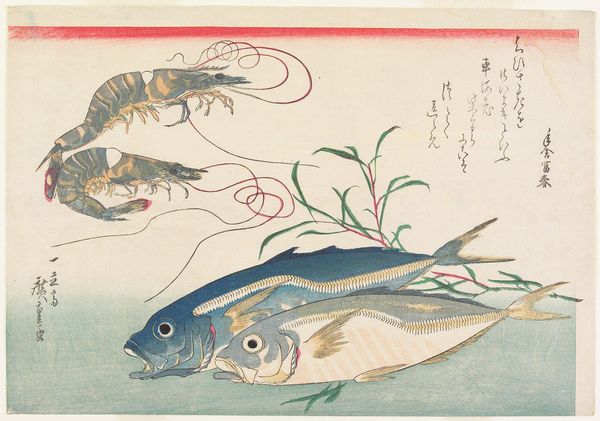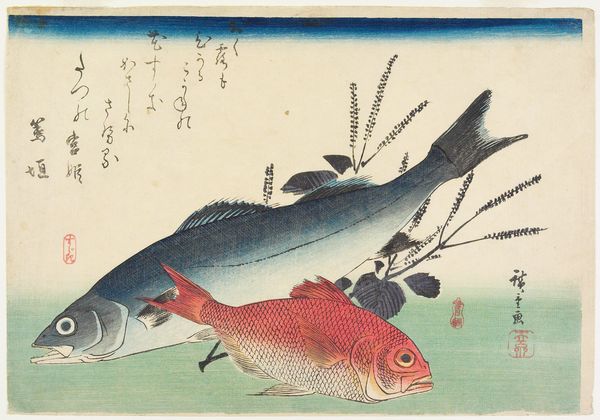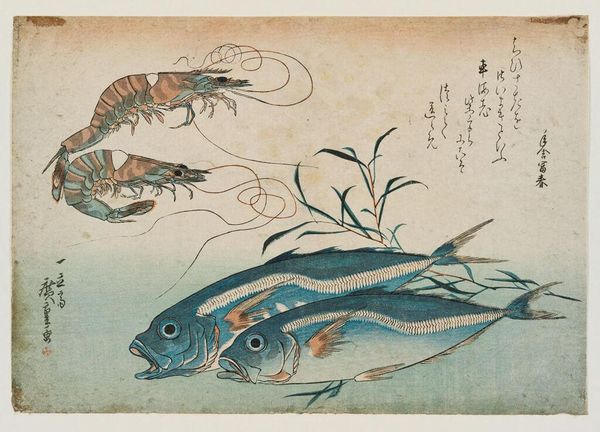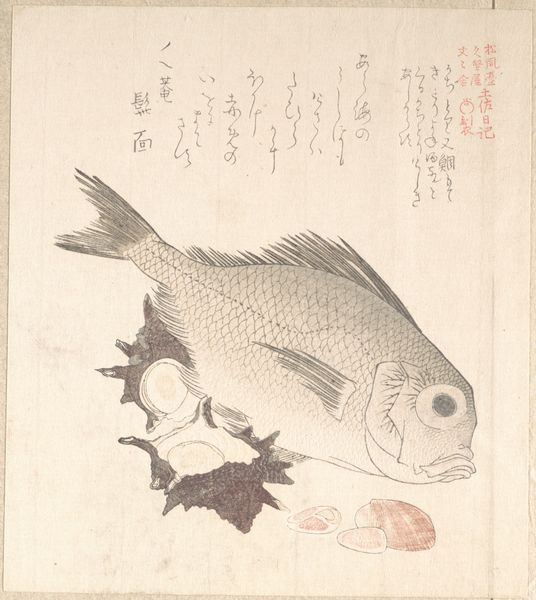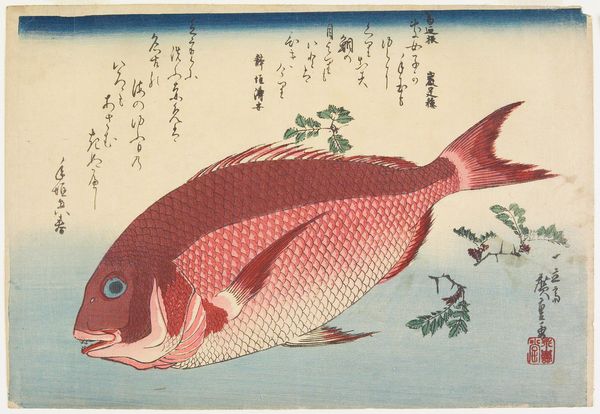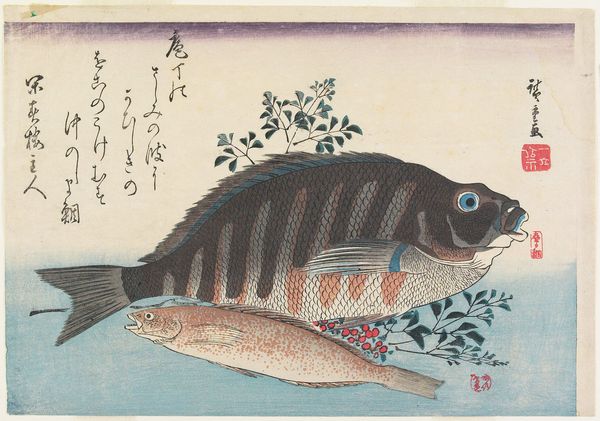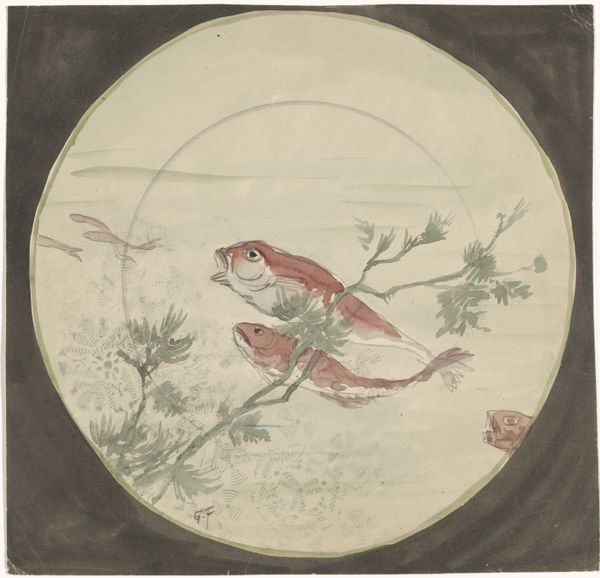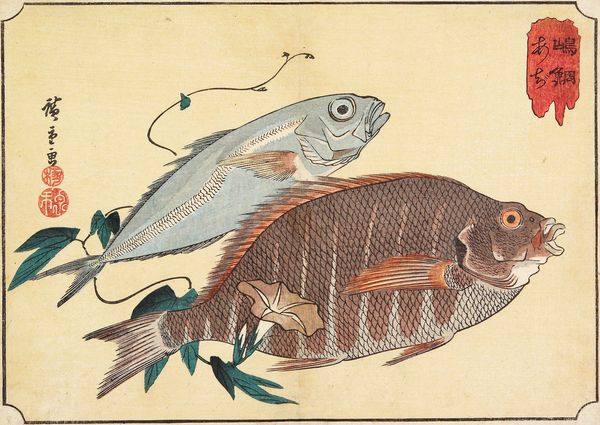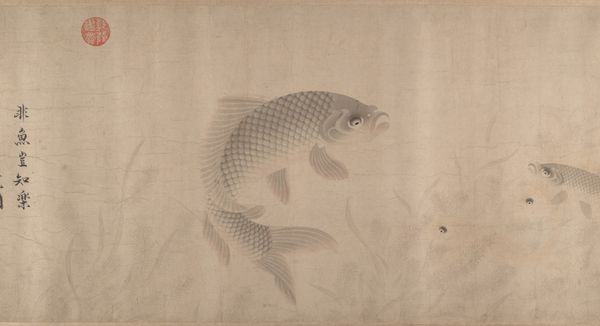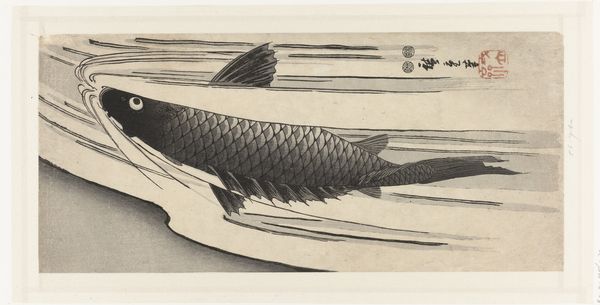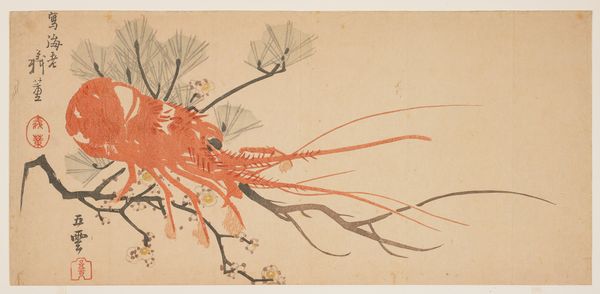
print, ink
# print
#
asian-art
#
landscape
#
ukiyo-e
#
japan
#
figuration
#
personal sketchbook
#
ink
#
coloured pencil
#
line
Dimensions: 9 3/16 × 11 7/16 in. (23.3 × 29.1 cm) (image, sheet, uchiwa-e)
Copyright: Public Domain
Editor: This is "Two Goldfish in Water" by Yamada Hōgyoku, from around the 1830s. It's a lovely little print, mostly in reds and blues. It strikes me as playful and a little dreamy, somehow. What catches your eye about it? Curator: Dreamy is a perfect word! Those fluid blue lines really set the stage for a reverie, don't they? I imagine the artist observing these goldfish in their little pond, letting their movements wash over him like a melody. You almost feel as though you could join them, gliding through the water without a care. What do you make of the choice of just goldfish as the subject? Editor: Well, goldfish are pretty common, aren’t they? Maybe that's part of the appeal – it’s everyday, yet beautiful. But, is there a specific significance to goldfish in Japanese art of this period? Curator: Absolutely! In the Edo period, goldfish weren't just pets; they were status symbols, like little jewels swimming around in your garden. Hogkyoku takes something seemingly ordinary and elevates it. This Ukiyo-e print invites us to see the grace and elegance even in the simplest things. It makes you think, what other hidden beauty is swirling just below the surface of our daily lives? Editor: I see what you mean. I hadn't thought about the status element before. So, the print is about more than just fish – it's a reflection on seeing beauty everywhere, and the goldfish just offer a peek? Curator: Exactly! It makes you want to slow down and look closely. Editor: I'll certainly look at goldfish differently from now on! Curator: Me too, every single object has an history and tells a story if we observe carefully.
Comments
No comments
Be the first to comment and join the conversation on the ultimate creative platform.
